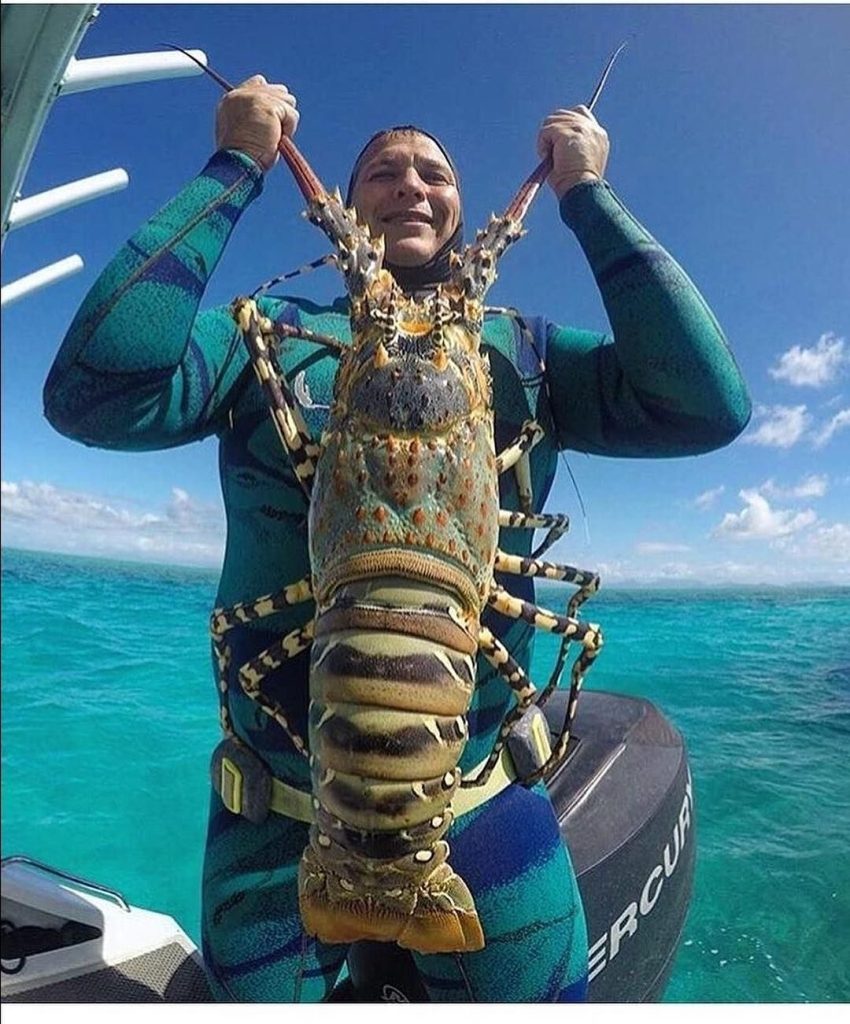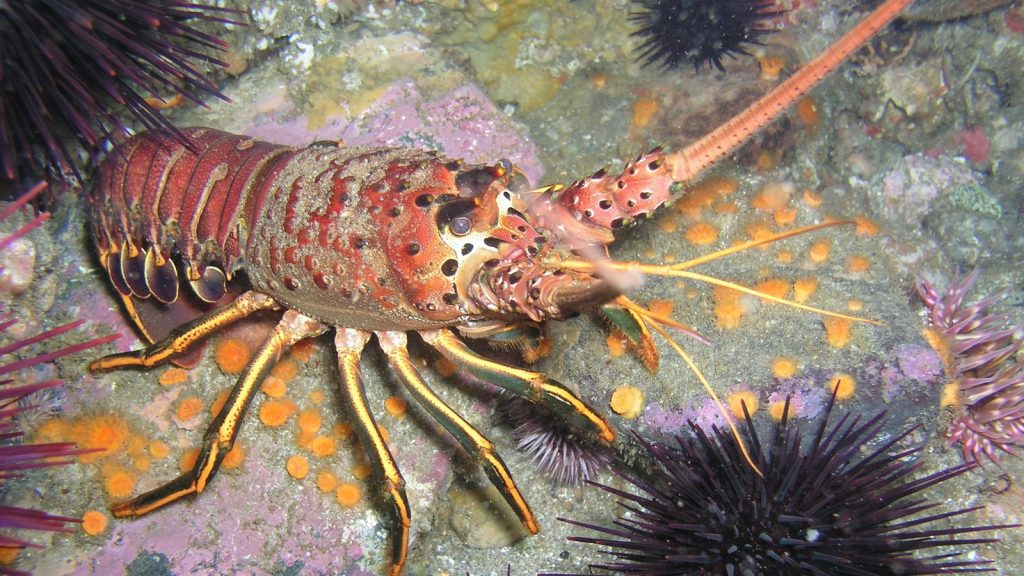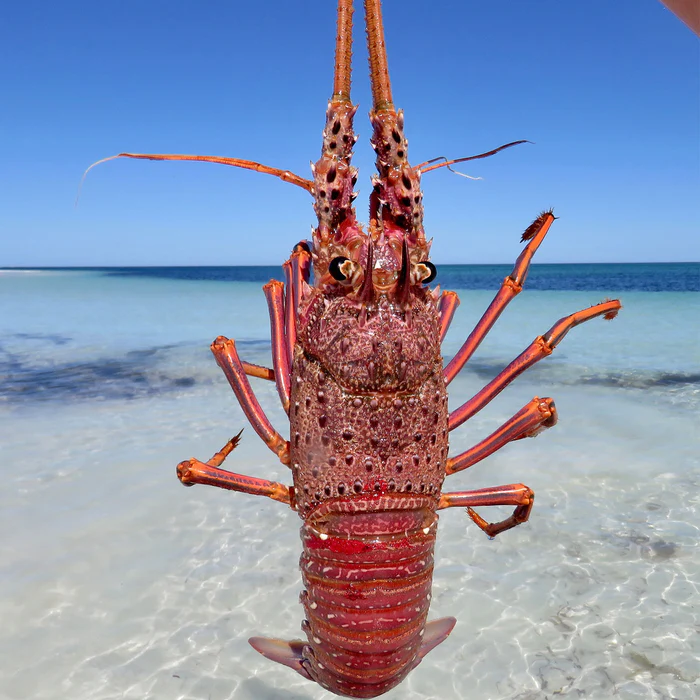Lobsters are often found in saltwater habitats, notably near the ocean floor in rocky or sandy locations. They are prevalent in the Atlantic Ocean, particularly the North Atlantic.
Lobsters are distinguished by their lengthy, split body and strong exoskeleton. Their flesh is famous for having a sweet, juicy taste and a soft texture.
For generations, lobsters have been cherished as a gourmet delicacy, and they are highly appreciated in various cuisines across the world.
Lobsters, unlike humans and many other species, do not show conventional indications of ageing or have a fixed lifetime.
They have indeterminate growth, which means they will continue to develop throughout their lifetimes. Because of the difficulty in determining age, the maximum lifetime of lobsters is unknown.
The real lifetime of wild lobsters is currently under investigation and discussion.
How Long Do Lobsters Live?
While many species are recognized as lobsters, such as spiny lobsters, squat lobsters, and slipper lobsters, the name is more strictly used to refer to the crustaceans in the biological family Nephropidae.
Scientists have explored a number of approaches to figure out how old lobsters are. In many other creatures, specialists may utilize growth rings left on hard structures like bones or scales to calculate an individual’s age.
A lobster is an animal that are known for their long life. Researchers have discovered that lobsters, if not caught or negatively impacted by the environment, can live for 45 to 50 years in the wild. Clawed lobsters have an average lifespan of 5-7 years, however, they may easily survive for 50 years.
Factors That Affect the Life Span of Lobsters

The life duration of lobsters can be impacted by several circumstances. These are some crucial elements:
Species: The lifespans of different lobster species might vary. For instance, compared to certain other lobster species, the American lobster is reported to live longer.
Size: Larger lobsters often have longer life-spans than smaller ones. Greater lobsters that weigh about 1 kg have had more time to develop and withstand a variety of environmental hazards.
Environmental conditions: The habitat quality and other environmental elements have an impact on lobsters. Their general health and longevity may be affected by elements including water temperature, food availability, and water quality.
Predation: Natural predators including fish, octopuses, and other bigger crustaceans pose a hazard to lobsters. As lobsters grows bigger, the risk of predation might rise, potentially reducing their chances of survival, and increasing their chances of being eaten by predators.
Disease and Parasites: Like any other living thing, lobster biology suggest that it can contract illnesses and develop parasites, which can shorten their life-span.
Fishing pressure: Lobster populations may be negatively impacted by overfishing or unsustainable fishing methods. To preserve healthy lobster populations and enable them to live to their full potential, strict rules and sustainable management approaches are essential.
Here is a comparison table of the lifespan of lobsters to other marine creatures.
| Lobster Species (Common) | Lifespan (Average) | Other Species | Life span (Average) |
| American Lobsters | More than 100 years | Koi Fish | 50 -70 years |
| European Lobsters | 30-80 years | Giant Tortoise | Over 100 years |
| Norway Lobsters | 10- 20 years | Bowhead Whales | Over 100 years |
| Caper Lobsters | 50-100 years | Greenland sharks (Somniosus microcephalus) | Approximately 392 years |
| Nephrosis Rosea | 100 years | Blue whales (Balaenoptera musculus) | Around 70-90 years |
| Thymops | 5-20 years | Tuba Worm | 100-200 years |
| Tasmanian Giant Freshwater Lobsters | 100 year (approx) | Red sea urchins (Mesocentrotus franciscanus) | Over 80 years |
Are Lobster Immortal?

The belief that lobsters are eternal originates from their capacity to escape senescence, or the natural process of aging make them immortal.
During the process of molting, lobsters possess a remarkable capacity to rebuild cells and fix damaged chromosome that let lobsters live so long. Despite their remarkable healing ability, lobsters are nonetheless susceptible to death.
The myth that lobster live forever is most likely the result of a confluence of causes. Lobsters tend to have a long life and can grow to enormous sizes and has a faster metabolism.
This, together with their capacity to molt and ability to regenerate, has fueled conjecture about their possible immortality.
The metabolic cost of molting grows with age, and ultimately, the amount of energy needed may surpass what the lobster can maintain, resulting in a reduction in general health and survival. Humans deliberately hunt lobsters for food.
According to study, male European lobsters live an average of 31 years while female lobsters live an average of 54 years. Males in American lobsters live an average of 50 years, whereas females live an average of 90 years.
Lobsters’ Ability to Live Out of Water

Lobsters are known to be predominantly aquatic creatures that have evolved to thrive in marine habitats. They do, however, have specific adaptations that allow them to exist for a brief time outside of water.
Lobsters have gills that take oxygen from water. When they are not in water, they may store moisture in their gill chambers, which allows them to maintain their respiratory function for a brief period of time.
Their exoskeleton works as a protective layer, preventing severe dehydration and allowing them to retain moisture.
Lobsters possess some thermal tolerance, allowing them to survive temperature variations and warm water. Their ability to survive extreme temperatures outside of water, nevertheless is limited.
When they are not in the water, their movement is greatly decreased. Their legs are designed for swimming and crawling in a buoyant surroundings, making walking on land or crossing tough terrain difficult and time-consuming.
Molt and Growth
A young lobster are considered to mature through a process known as “molting.” A lobster will take in surplus water during this process, which will press shed their old shell from the inside, forcing it to split.
The adult lobster then removes itself by shedding its outer shell and emerging with a fresh, soft exoskeleton. Ecdysis is the term for this type of extraction.
Molting involves not just physical growth but also the regeneration and repair of bodily tissues as they continue to grow. Lobsters may regrow missing limbs or tissues that are harmed during the molting process.
When they molt, the calcium stored in their bodies is used to build the new exoskeleton, maintaining its rigidity and strength.
During the molting process, lobsters are more susceptible. Lobsters are momentarily soft-bodied and more vulnerable to predation and environmental disturbances as they lose their previous exoskeleton.
Lobster Age Estimation
Nobody knows an age of a lobster, although some specialists believe they can easily live on the ocean floor for a century or more. Lobsters lack outward characteristics that show their age, such as tree rings or fish scales.
Scientists have tried various methods to estimate lobster age, such as tagging, radioisotopes, liposuction and gastric mills
Tagging entails labeling individual lobsters with an identifying number and following their growth over time. Radioisotopes are determined by determining the quantity of carbon that is radioactive in the lobster’s shell or tissue, which represents the level of the atmosphere at the time of creation.
Observing the growth rings on the lobster’s eyestalk or stomach mill is one way. Lobsters and other crustaceans typically grow one ring every year. While other variables could influence the growth, it provides an indication of how long the lobster has been living.
Another method is , Lipofuscin, a pigment found in cells that increases as an organism matures. Lipofuscin accumulation as an age indicator in lobsters has been studied in certain research.
Scientists may measure the comparative age of lobsters by measuring lipofuscin levels in different organs.
Aging and Old Age in Lobsters

Lobsters, like other species, show indications of aging as they age. An organism’s DNA is organized into tidy packets known as chromosomes.
A structure is found at the ends of each chromosome called telomerase. Telomeres gets shorter each time a cell divides. When the telomeres become too short, the cell self-destructs and dies.
As lobsters mature, their movement decreases. They may become less energetic and their motions may become less agile. Female lobsters usually lay fewer and smaller eggs, while male lobsters will have lower sperm quality and quantity.
Older lobsters may have diminished regeneration capacities, resulting in delayed wound healing or an inability to repair damaged limbs as effectively as younger lobsters.
Oldest Lobsters Ever Recorded

- Among the most renowned is George, a male American lobster. George was caught off the shore of Newfoundland, Canada, in 2009. He was thought to be approximately 140 years old at the time.
- Louie was a male American lobster captured off the shores of Maine, USA, in 2012. He weighted around 20 pounds and was about 100 years old. Louie’s age was calculated using the rings of growth on his eyestalks.
- Larry, a male American lobster captured off the coast of Nova Scotia, Canada, in 2013. Based on his size and the development rates of lobsters in the area, Larry was believed to be over 100 years old.
Catching and Consumption of Lobsters
Common ways for fisherman to catch lobsters includes lobster pots or traps, where the lobsters are drawn to and trapped in baited traps. Another technique used in some areas is diving, when divers manually capture lobsters. Although less frequent, trawling includes dragging nets over the ocean floor.
The lobster fishing sector is important commercially and employs sustainable procedures. To avoid overfishing, these include catch caps, size limitations, and restricted seasons. Innovations in trap design attempt to reduce bycatch and enable the escape of undersized lobsters.
Marine protected zones and v-notching both assist to preserve the habitats of lobsters. The main ethical issues regarding lobster consumption are those related to animal welfare, which raise concerns about how lobsters are treated and killed.
Conclusion
People have been fascinated with lobsters for millennia because they are intriguing animals. It became clear that lobsters are intricate organisms whose lifespan, behavior, and conservation requirements still require significant research. To guarantee the long-term survival of lobster populations and their ecosystems, sustainable fishing methods and conservation initiatives must be continued.
Frequently Asked Question
How long can a lobsters live naturally?
In their native habitat, lobsters have the ability to live for hundreds of years. Although the actual longevity can vary depending on the kind of lobster, the habitat, and individual differences, it is widely accepted that lobsters can live for 40 to 70 years or even more.
What oldest lobster is a 140 years?
In their native habitat, lobsters have the ability to live for hundreds of years. Although the actual longevity can vary depending on the kind of lobster, the habitat, and individual differences, it is widely accepted that lobsters can live for 40 to 70 years or even more.
Can lobsters live 200 years?
Theoretically, a lobster may live for up to 100 years or more; however, there have been instances of several unusually long-lived species. However, there is no scientific support for the claims that lobsters live up to 200 years.
Are lobsters going extinct?
Lobsters are not thought to be in danger of becoming extinct or being declared an endangered species. Through fishing restrictions and conservation initiatives, many lobster populations across the world are kept in a reasonably stable state and are sustainably maintained.
Have lobsters got teeth?
Lobster have teeth in their stomach. The stomach is just a short way from the mouth, and it is the stomach itself where food is truly eaten between three grinding surfaces that resemble molar surfaces, or the “gastric mill.”
How long can a lobster live in captivity?
In captivity, lobsters may be able to survive for a long time, however there are a number of variables that may affect this, including the standard of care, the state of the habitat, and the species. A lobster kept in captivity does not show obvious indications of ageing, hence it might be difficult to determine their age with accuracy.
References: Include Scientific Reference With the Link Below
- Reference 1: https://longevity.technology/news/longevity-of-the-lobster-and-the-implications-for-humanity/
- Reference 2: https://www.mcgill.ca/oss/article/student-contributors-did-you-know/lobsters-are-not-immortal-myth-they-are-seems-be
- Reference 3: https://www.quora.com/What-adaptations-do-lobsters-have-to-survive-in-different-depths-and-temperatures-of-the-ocean
- Reference 4: http://www.lobsters.org/tlcbio/biology3.html
- Reference 5: https://academic.oup.com/jcb/article/25/1/95/2670504
- Reference 6: https://www.academia.edu/4161875/Lobster_Houses_as_a_Sustainable_Fishing_Alternative




Wow, this blogger is seriously impressive!